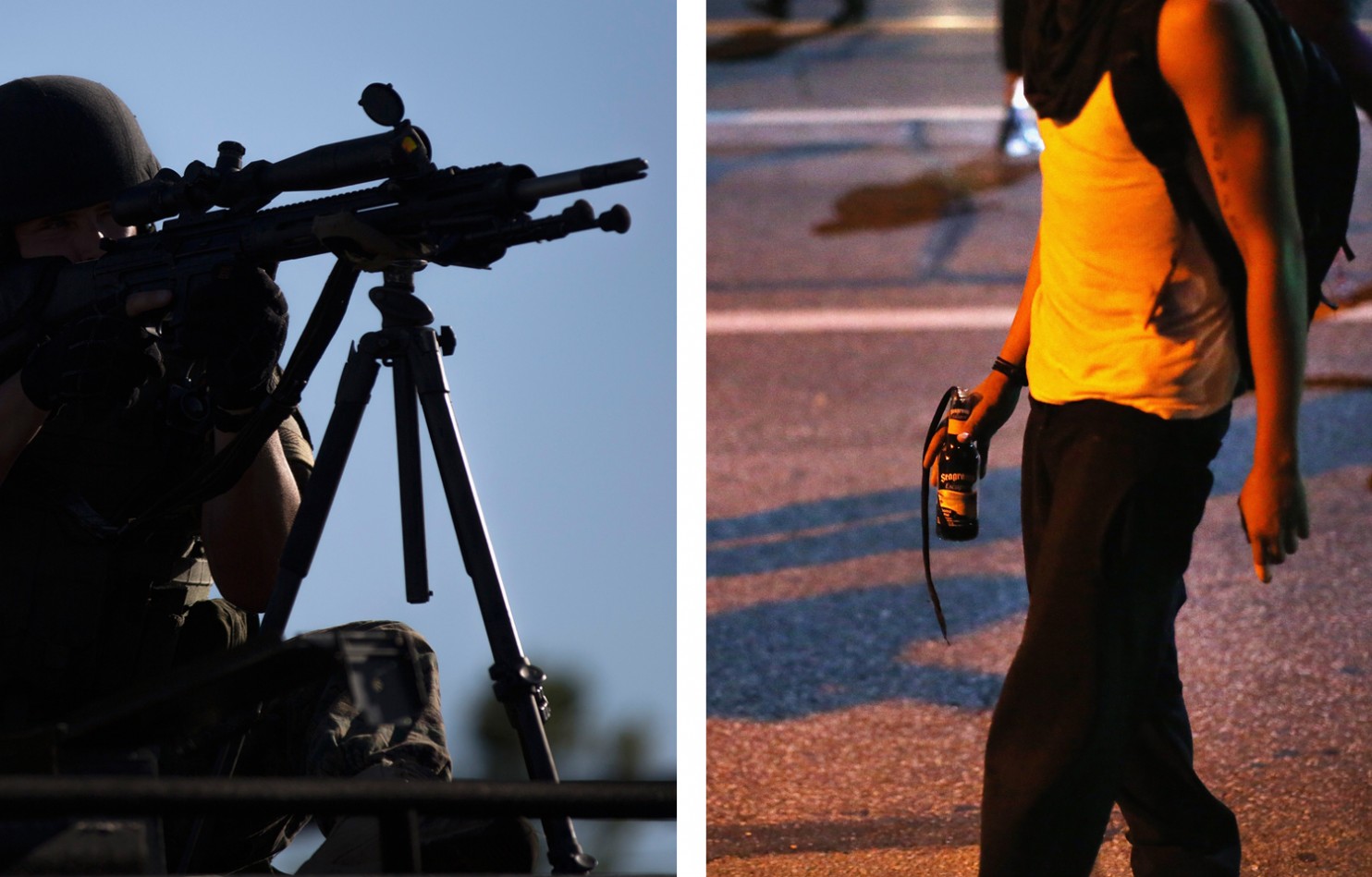
A man lights a rag in a bottle and prepares to throw a Molotov cocktail; militarized police sit atop armored vehicles, guns drawn and aimed at protestors who have their hands raised. Both are volatile images, and both confirm aspects of the truth: There are provocateurs among the mostly peaceful protestors, and the police have adopted a terrifyingly aggressive posture in relation to the citizens they supposedly serve.
But these images aren't coming from Egypt or the Gaza Strip or Ukraine. These are our own, homegrown documents of social unrest and they can't, like images from more distant lands, be kept safely at bay.
The manipulation of photography has become so complex and widespread that images from conflict zones often tend to cancel each other out. Propaganda has trickled down from the state to the D.I.Y. level, and it's hard to tell the difference between the two.
The resulting frustration, our inability to be certain of the authenticity of the image and the accuracy of the caption, is in many ways a relief: If we can't be sure whether the bloodied corpse of a dead child was the result of a bomb from Hamas, or the Israeli army, we push it aside, grateful not to have to take a moral position on the conflict. The self-canceling nature of images releases us from the responsibility to think things through.
We don't have that luxury when it comes to the images out of Ferguson because this is us. These are the cities we have made, the police we have hired and paid to protect us, the social fissures we have allowed to fester, the social inequity we accept as necessary collateral damage from our larger pursuit of prosperity. So we must ask: Do these images really cancel each other out? Does the man with the Molotov cocktail in some mathematical way create a deficit in the social order that requires the compensation of a military confrontation? Are both sides of the equation balanced?
The state was once well served by its near monopoly on the ability to manipulate and control imagery. But today, just the opposite is true. People in authority benefit from our distrust of images because that distrust feeds a seeping, nihilistic detachment, which leads to civic disengagement. We turn away from our responsibility to watch the Watchmen; we tend our own garden.
Police brutality, caught on tape so many times now that it is a wonder more communities haven't erupted in outrage like Ferguson, can only be dismissed if the citizenry is adept at disbelieving what it sees. The video tape gone viral on Facebook or YouTube, we are told again and again, doesn't capture the context of the beating, the tasering or the shooting. It must be interpreted by professionals; you can't believe what you see. We'll form a task force and get back to you . . . after you're no longer interested, or angry.
Many of us, children of the Cold War and still keenly aware of the great propaganda regimes of the violent 20th century, have been so well trained, for so long, to disbelieve images that we are at the mercy of our own robust sense of suspicion. To be a sophisticated consumer of images, we became reflexive skeptics; that same reflexive skepticism is the thing that propaganda manipulates.
But where certainty is elusive, common sense is the best defense. Every photograph requires two very different kinds of motion: The photographer moves through the world, quickly looking for images that dramatize and illustrate what he or she thinks is happening; and the world, slowly, over long arcs of time, comes to exist in a way that offers the photographer opportunities and material. One is a rapid motion of searching and selection, the other a near-glacial movement of social and historical forces. The photographer, or the photo editor, or the person who describes the events in an image, may all indulge chicanery and manipulation, but if the world keeps presenting itself, over and over again, in the same way, revealing the same things, that is much more difficult to ignore, dismiss or contextualize away.
Put another way, an image of a man with a Molotov cocktail captures one man with a Molotov cocktail; but multiple images of a phalanx of men in riot gear, deploying tear gas, wielding machine guns, can only exist if disparate and complex social, economic and historical forces have conjoined to produce the events represented therein. The actions of a few angry people are asymmetrical to the existence of sophisticated weapons, the troops and the authority deploying them. These images don't cancel each other out because it takes a lot more social energy and investment to produce a hostile police force terrorizing its citizens than it does to create a handful of violent protestors co-opting peaceful assembly.
That, at least, is what common sense tells us. But the people of Ferguson are telling us the same thing, too.
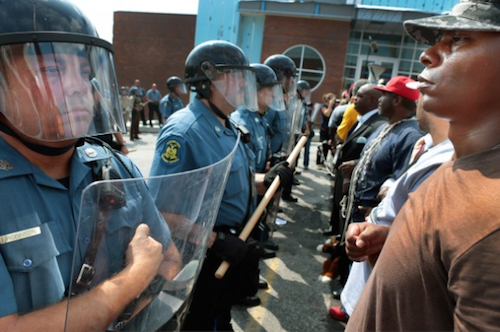
It's also what the details in some of these images are telling us. We have armed and equipped our police like our military, and that equipment is now shaping the men and women who use it. Ferguson is a city of low-slung buildings, with lots of fast food, chain stores and quickie marts, a classic "near-in suburb" that hasn't benefited from the rejuvenation of the urban core; it is a land of cars, disconnected from the popular light rail line that connects other parts of the larger St. Louis County. That too is likely shaping the larger social context of these events - and may presage a new era in which the suburb is the focal point of social unrest.
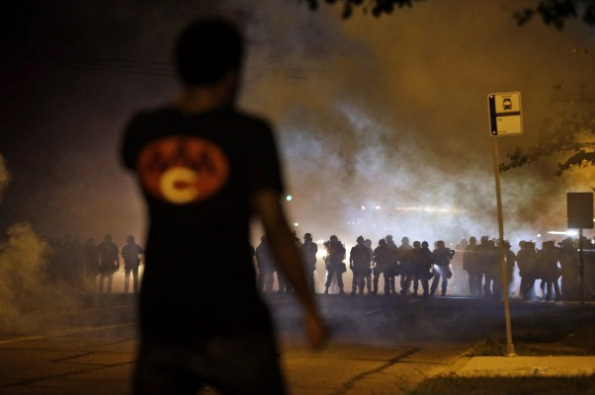
fourth night of protests in Ferguson.
On Thursday, President Obama weighed in, calling for healing. But when it comes to the distrust of authority, he has presided over the enlargement of the problem. The head of the CIA has been caught lying, but hasn't been punished; the security state has expanded its powers to include pervasive domestic spying, with access to our telephone calls, our e-mails and our online lives. And the rise of what one critic calls "The Warrior Cop" hasn't slackened since President Obama took office. The detainment of journalists, on Wednesday, by police in Ferguson may seem like just more bad optics in St. Louis County; but a 2013 report by the Committee to Protect Journalists claims the current administration has been one of the most aggressive ever in limiting press access, guarding information, pursuing leaks and whistleblowers, and limiting transparency.
Images from far away may cancel each other out as we seek to evade their meaning. But the images coming out of Ferguson now seem cumulative, their impact escalating, and they don't seem far away at all but deeply connected to larger national trends. The man with a Molotov cocktail and the military showdown by lethally armed soldiers of the state are both true; taken together, they show us the world we have built, the injustice we have tolerated, the cynicism we have indulged. They show us the most intimate truth: We have come to this.
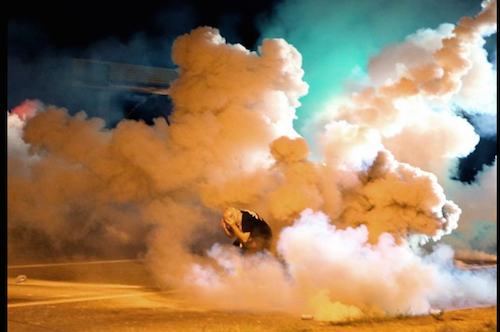
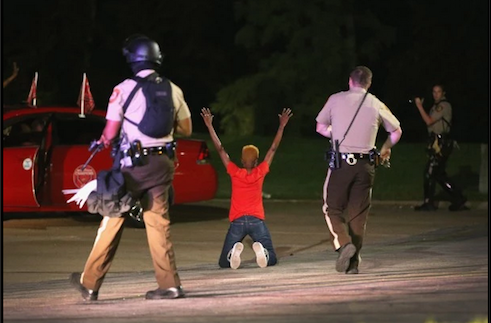
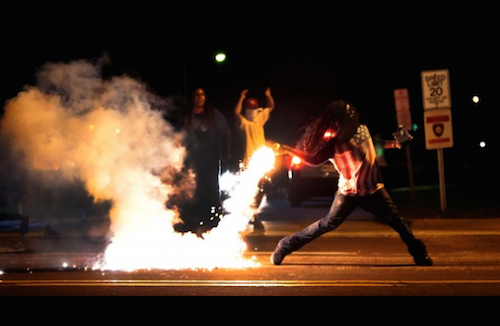



Reader Comments